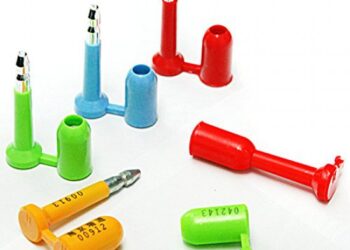Verifying the authenticity of an ISO 17712 certified security seal is crucial for maintaining the security of cargo shipments and ensuring compliance with international standards. ISO 17712 specifies requirements for high-security seals used on containers, trucks, and other transportation equipment to prevent tampering and unauthorized access. Here’s a detailed guide on how to verify if a security seal is truly ISO 17712 certified.
1. Understand ISO 17712 Certification:
ISO 17712 is an international standard that sets forth guidelines for the design, testing, and approval of high-security seals used in international shipping. The standard has three levels of certification: “H” (high security), “S” (security), and “I” (indicative). The “H” certification is the highest level, designed to withstand tampering and provide evidence of unauthorized access.
2. Check the Seal’s Marking:
An ISO 17712 certified security seal should have a unique, alphanumeric code stamped or laser-etched onto it. This code corresponds to the manufacturer’s name, logo, and a unique identification number. Verify that the marking is clear, well-defined, and not easily removed or altered. Additionally, check for any misspellings or irregularities in the marking, as these could be signs of a counterfeit seal.
3. Validate the Manufacturer:
Identify the manufacturer of the security seal and cross-reference their information with the official list of ISO 17712 certified manufacturers. The International Seal Manufacturers Association (ISMA) maintains a list of certified manufacturers on its website. Make sure the manufacturer’s name and contact details match those on the official list.
4. Verify the Unique Identification Number:
Each ISO 17712 certified security seal has a unique identification number that corresponds to the manufacturer’s records. Contact the manufacturer directly or use their official online verification tool to confirm the authenticity of the seal by entering the identification number. The manufacturer’s verification system should provide information about the seal’s certification status, including the type of certification (e.g., “H” for high security).
5. Examine the Packaging:
Legitimate ISO 17712 certified security seals usually come in packaging that displays the manufacturer’s branding, contact information, and a QR code or barcode. Scan the QR code or barcode using a reliable scanning app to ensure it leads to the manufacturer’s official website or verification page.
6. Physical Characteristics:
Carefully examine the physical characteristics of the security seal, such as its material, construction, and design. ISO 17712 certified seals are designed to be tamper-evident, requiring specialized tools to break them without leaving clear evidence of tampering. Check for features such as anti-spin mechanisms, reinforced locking mechanisms, and evidence of tampering, like color changes when exposed to heat or chemicals.
7. Seek Third-Party Verification:
If you have doubts about the authenticity of a security seal, consider involving a third-party expert or inspection service. These professionals are experienced in identifying counterfeit or non-compliant seals and can provide a thorough assessment.
8. Report Suspected Counterfeits:
If you suspect that a security seal is counterfeit or falsely claiming ISO 17712 certification, report it to the relevant authorities, such as customs officials, law enforcement agencies, or industry associations. Reporting suspicious seals helps prevent their circulation and protects the integrity of supply chains.
Conclusion:
verifying the authenticity of an ISO 17712 certified security seal involves a combination of checking physical markings, cross-referencing manufacturer information, validating unique identification numbers, and utilizing online verification tools. Following these steps ensures the security and integrity of cargo shipments and helps maintain compliance with international standards. Always stay vigilant and informed to safeguard against counterfeit seals and potential security breaches.












